Herb garden: planting ideas and advice on how to grow herbs
From how to grow herbs to companion planting and even indoor herb garden ideas, this is how to make the most of these aromatic plants
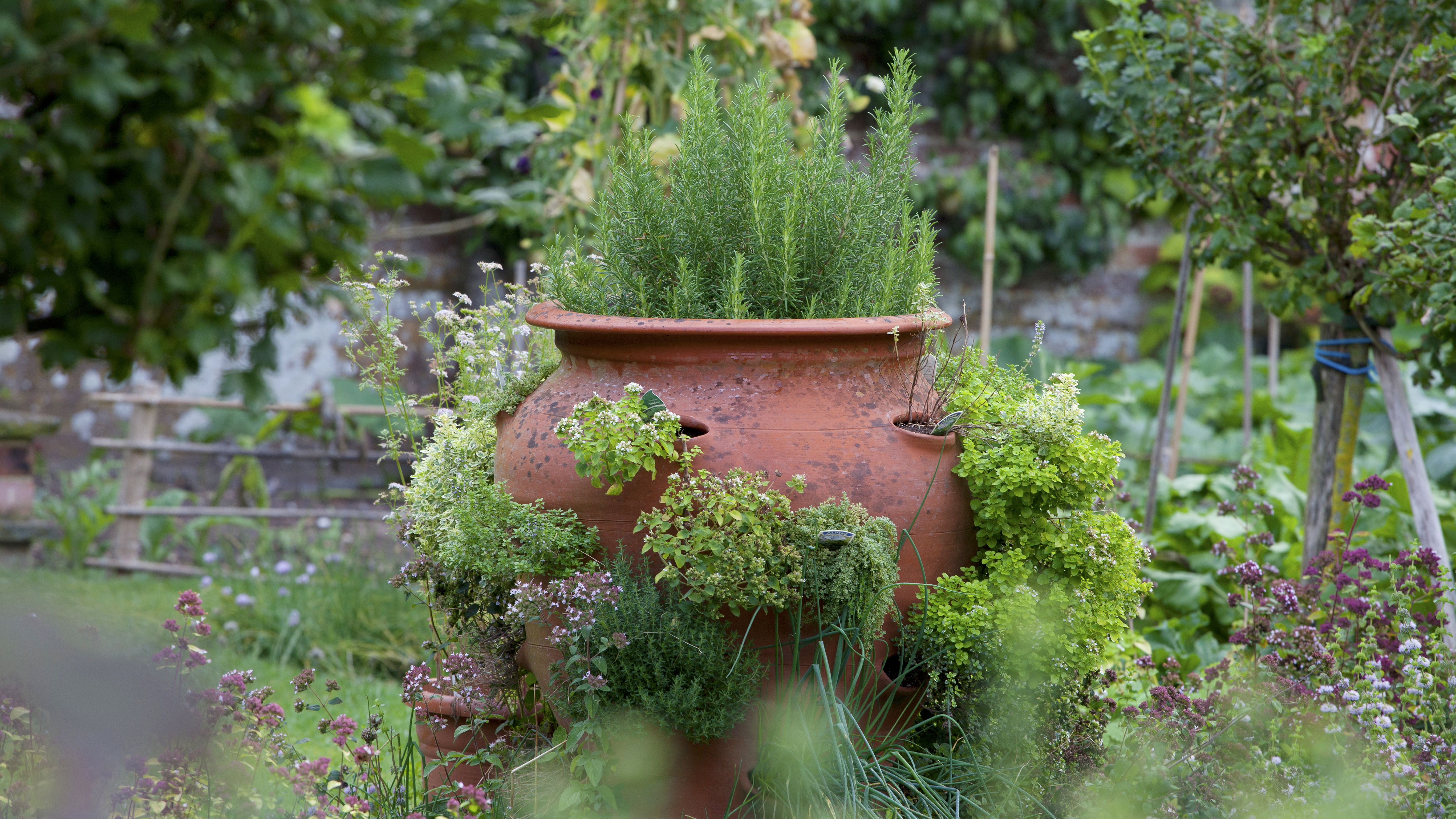
A herb garden can be practical and decorative, with the aromatic plants enjoyed for their use in cooking, their fragrance, or blooms. Easy to grow, herbs are a wonderful addition to your garden, while you can just as easily create an indoor herb garden too, because there are so many ways (and places) to grow them. They can be grown in a dedicated border, interplanted among other edibles, with ornamentals in garden beds, or in containers on a patio or courtyard and cooking herbs placed near the kitchen door ready for harvesting.
It is a cook and gardener's delight to be able to pop out to the garden and pick a sprig of rosemary to flavour a leg of lamb, a bunch of mint to add to a summer drink, or a handful of herbs to enhance a salad, and so knowing how to grow herbs is a must.
Read on to find out how to grow a herb garden, and find lots more garden ideas at our dedicated page.
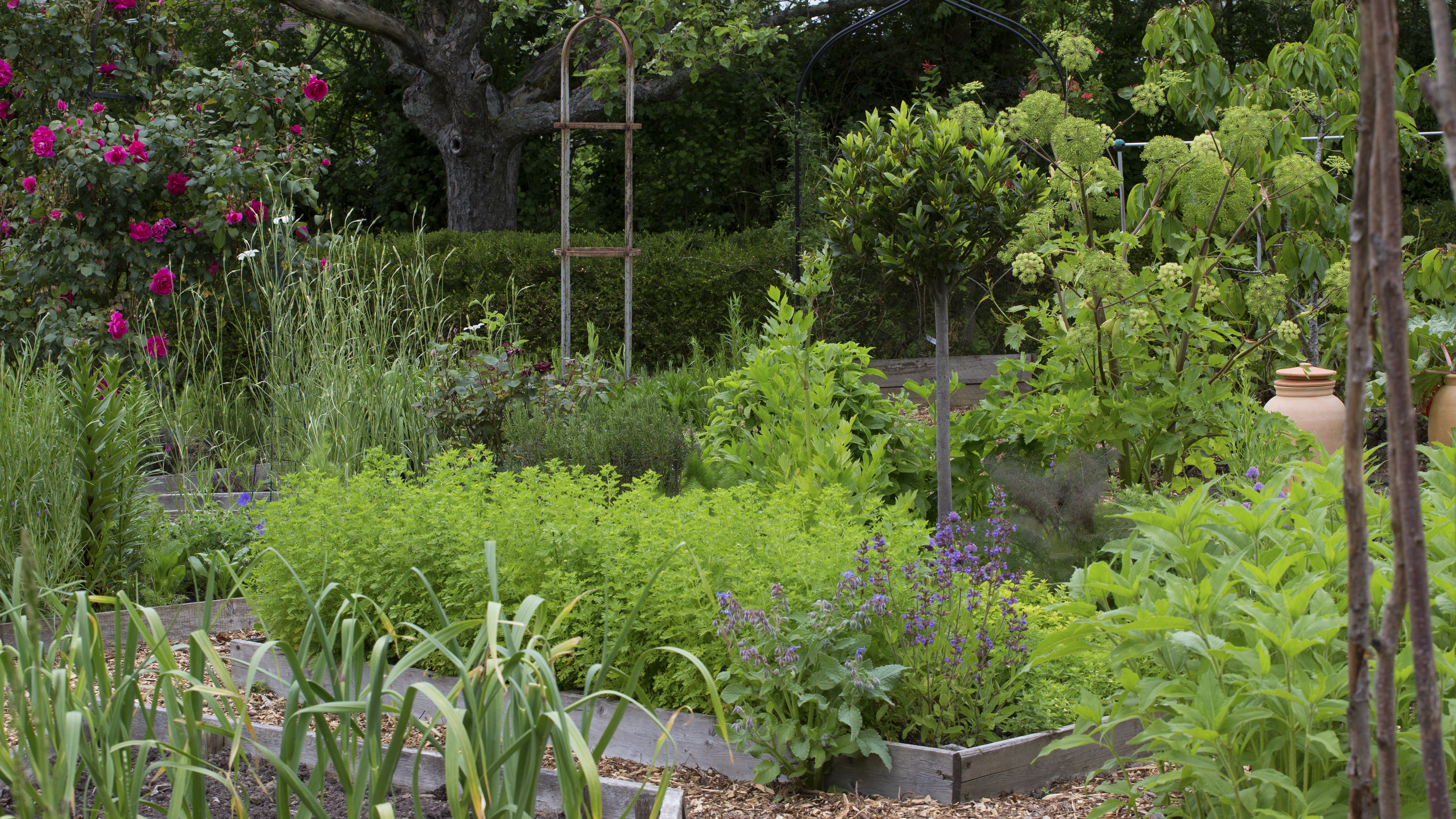
A herb garden within a vegetable garden
Herb garden design: how to plan yours
A herb garden can be formal or informal in design. Begin with a plan; draw up some options and try out your herb garden ideas before rushing out and planting.
Whether or not your herb garden is part of a general garden redesign, consider the following before you start designing yours :
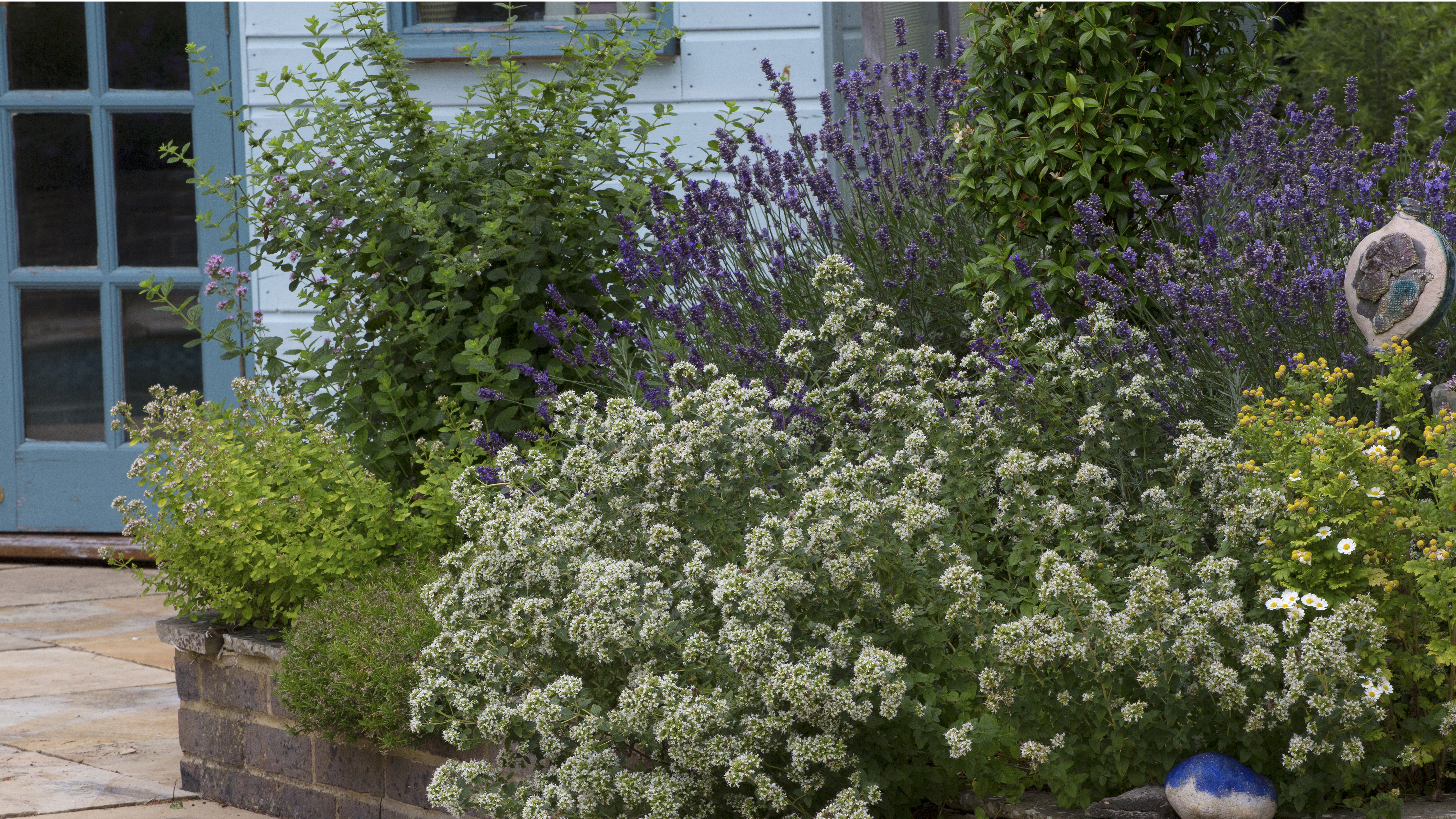
Position cooking herbs near the kitchen where possible, or by outside entertaining spaces where you can enjoy their fragrance
- Position cooking herbs near the kitchen: if the most commonly used herbs are just outside the kitchen door in a herb planter, or in a window box on the windowsill, you are much more likely to make use of them while cooking than if they are growing at the bottom of the garden.
- Herbs are also lovely planted near entertaining and outdoor areas where their aromas can be enjoyed. Find advice on creating an outdoor dining space.
- Design enough room for paths in your herb garden, for easy access and that take into account the sprawling nature of many herbs. Find advice on how to design garden paths in our guide.
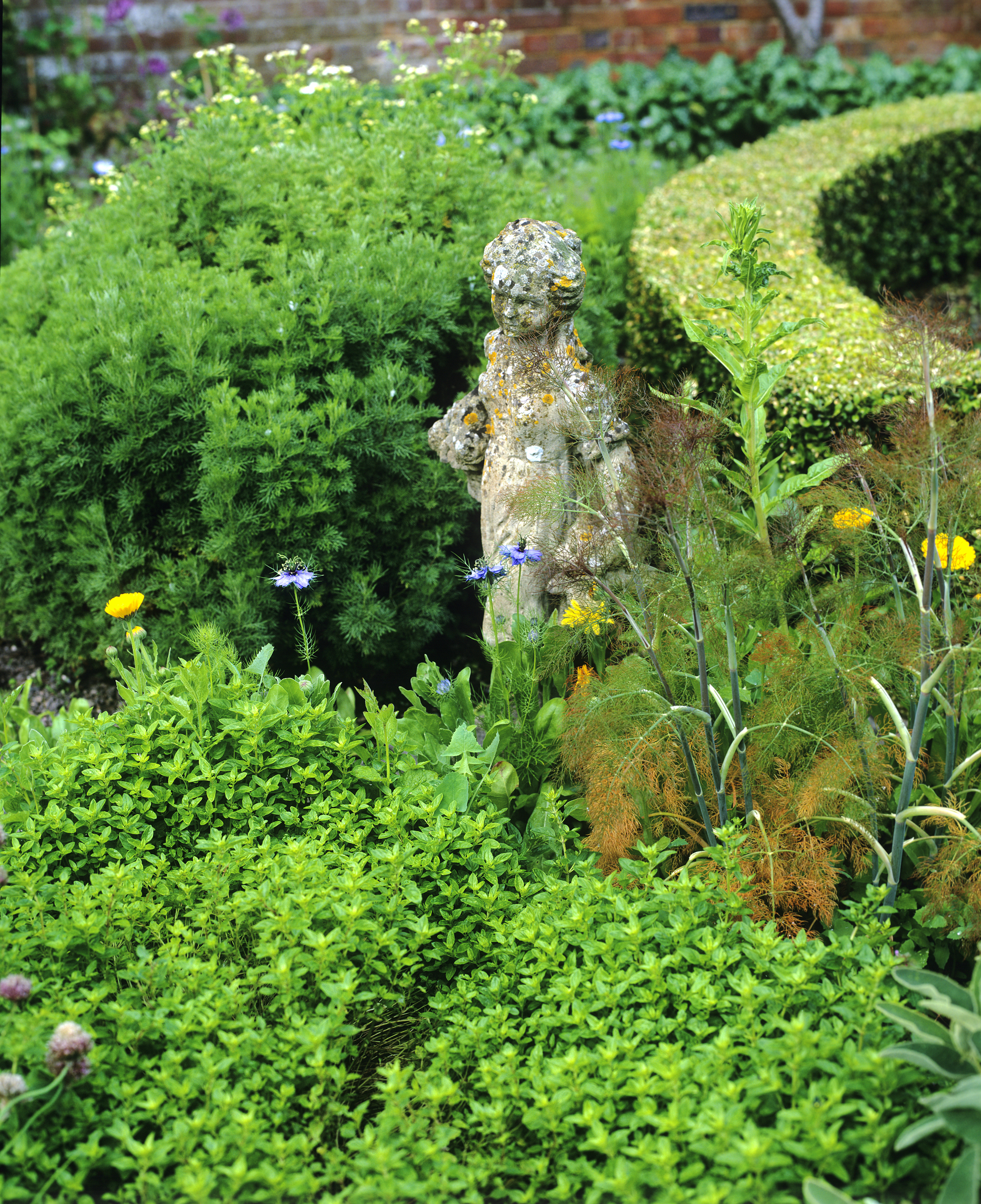
Include a focal point in the herb garden such as an aged stone statue
- Include a focal point in the herb garden, such as a birdbath, simple statuary, an urn overflowing with herbs, clipped standard bay tree or a sundial.
- Formal or informal? Square or rectangular beds are formal; traditional round beds cut into segments more informal.
- Use clipped hedges to both confine the herbs and add definition to a formal design.
- Use rustic paths and loose edges to add charm to an informal herb garden design.
- Consider also a herbal walk – growing herbs such as thyme and oregano in pockets along the paving, and hedges of lavender or rosemary.
- Consider the shape and spread of the herbs you choose for your herb garden, whether they are annuals or perennials, permanent or will need replanting, and how they will look throughout the year.
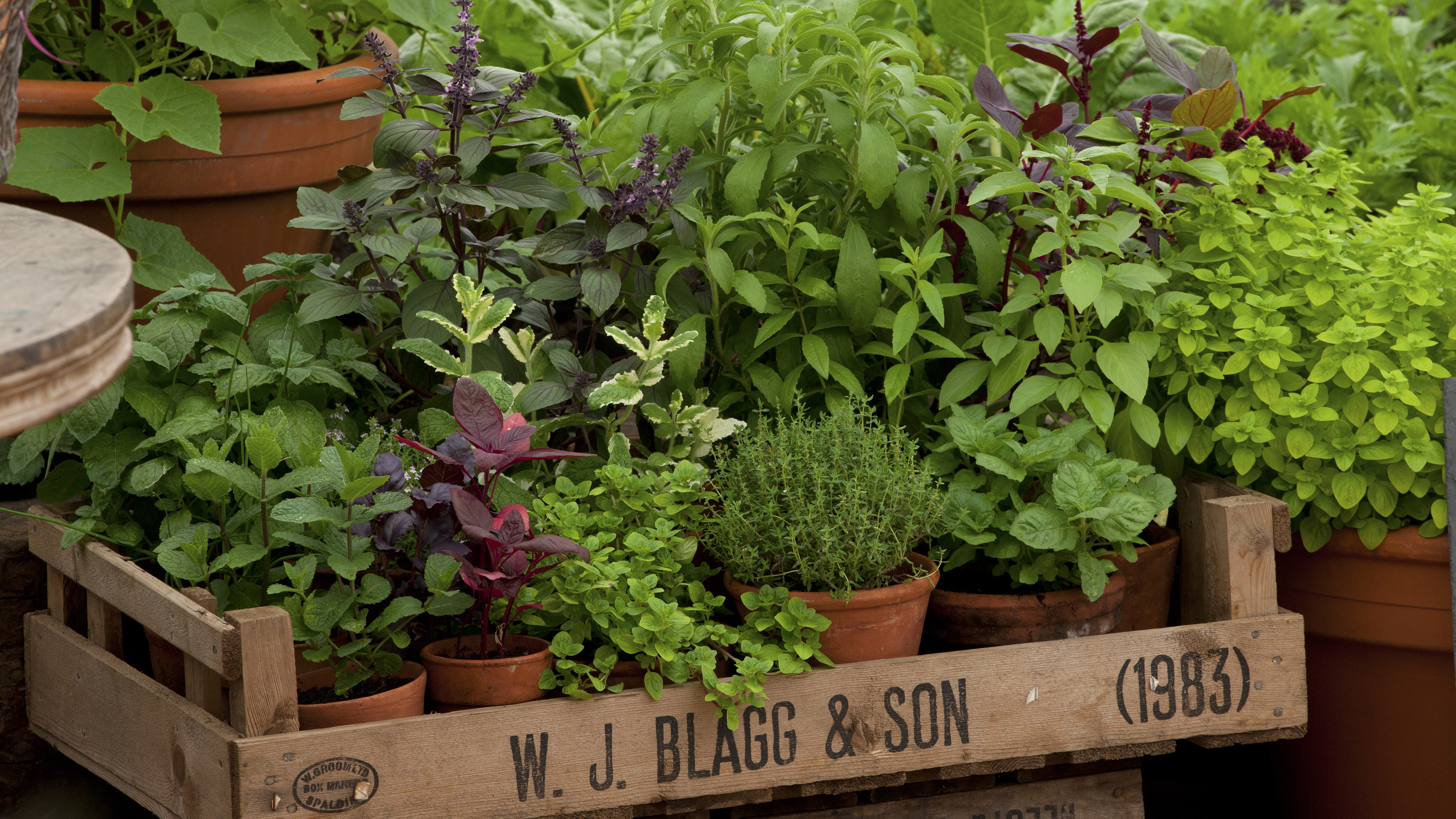
Grow herbs in pots where space is more limited in the garden
Easy herb garden ideas
Here is some inspiration to help give all herb gardens a little lift, even if you are a beginner!
1. Grow herbs in containers
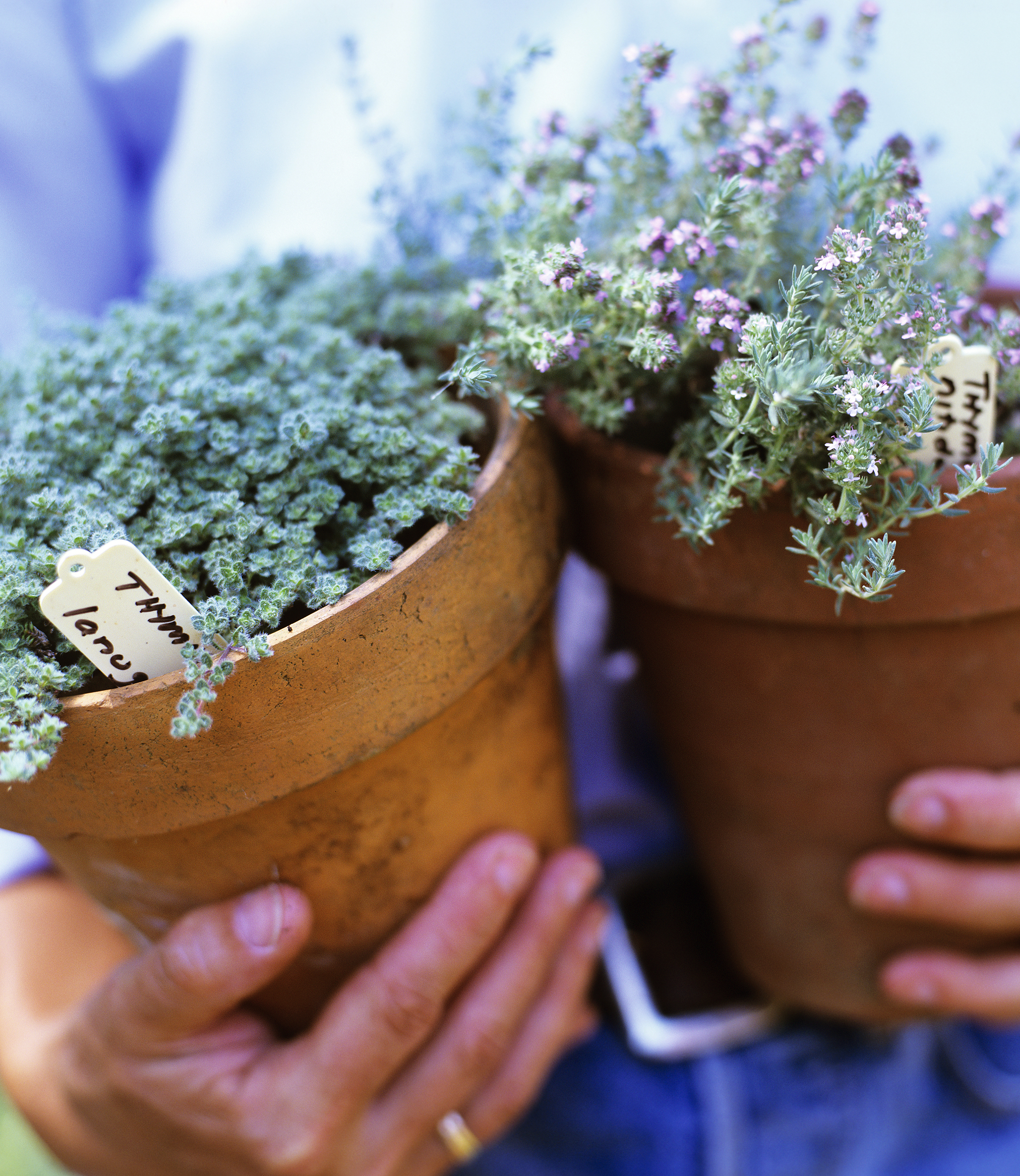
Terracotta pots are the classic choice for growing herbs
If you do not have the space for a herb garden, many herbs grow well in containers. It is often wise to contain ones that spread, such as mint, tarragon and lemon balm. Keep in mind, however, that their roots can still escape from the draining holes and potentially invade your garden. Terracotta pots are the classic choice for growing herbs, but for more ideas for container options see our advice on container gardening.
Get small space home decor ideas, celeb inspiration, DIY tips and more, straight to your inbox!
The other upside of growing herbs in pots? You can then move them around to suit the season, cover them with a cloche, pop them in a coldframe or bring them indoors in winter.
Find more gardening advice in Period Living magazine
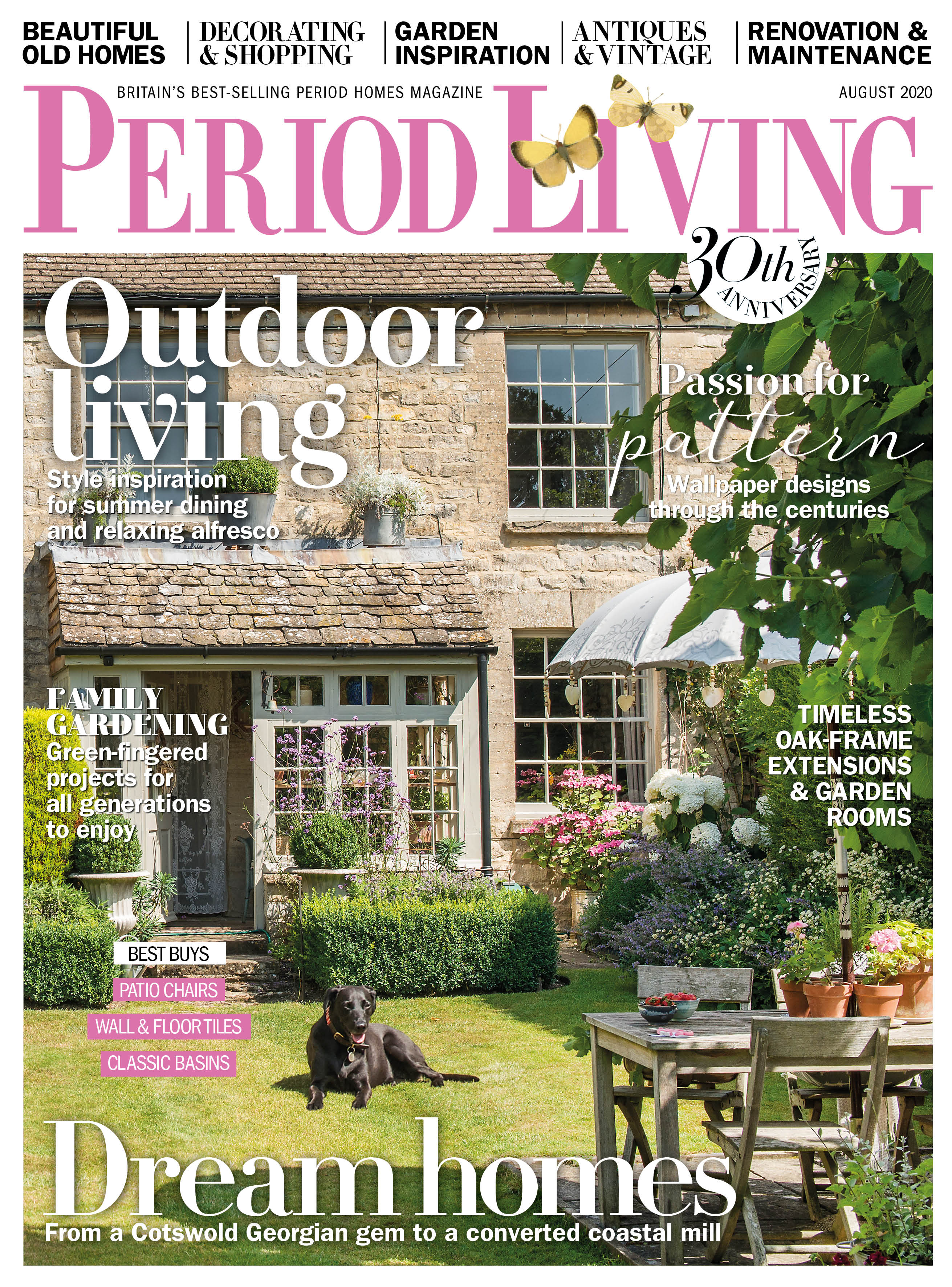
Period Living magazine is the perfect source of inspiration for anyone who owns an older property, or just loves characterful style. Check out the latest subscription offers.
2. DIY a herb plant container
Make your own herb garden container from pretty upcycled objects with our tips for DIY garden planters. Pots, old sinks, wooden boxes, metal planters can all make good containers – the main thing is to just make sure it has good drainage so the water can escape.
3. Choose a stylish herb planter
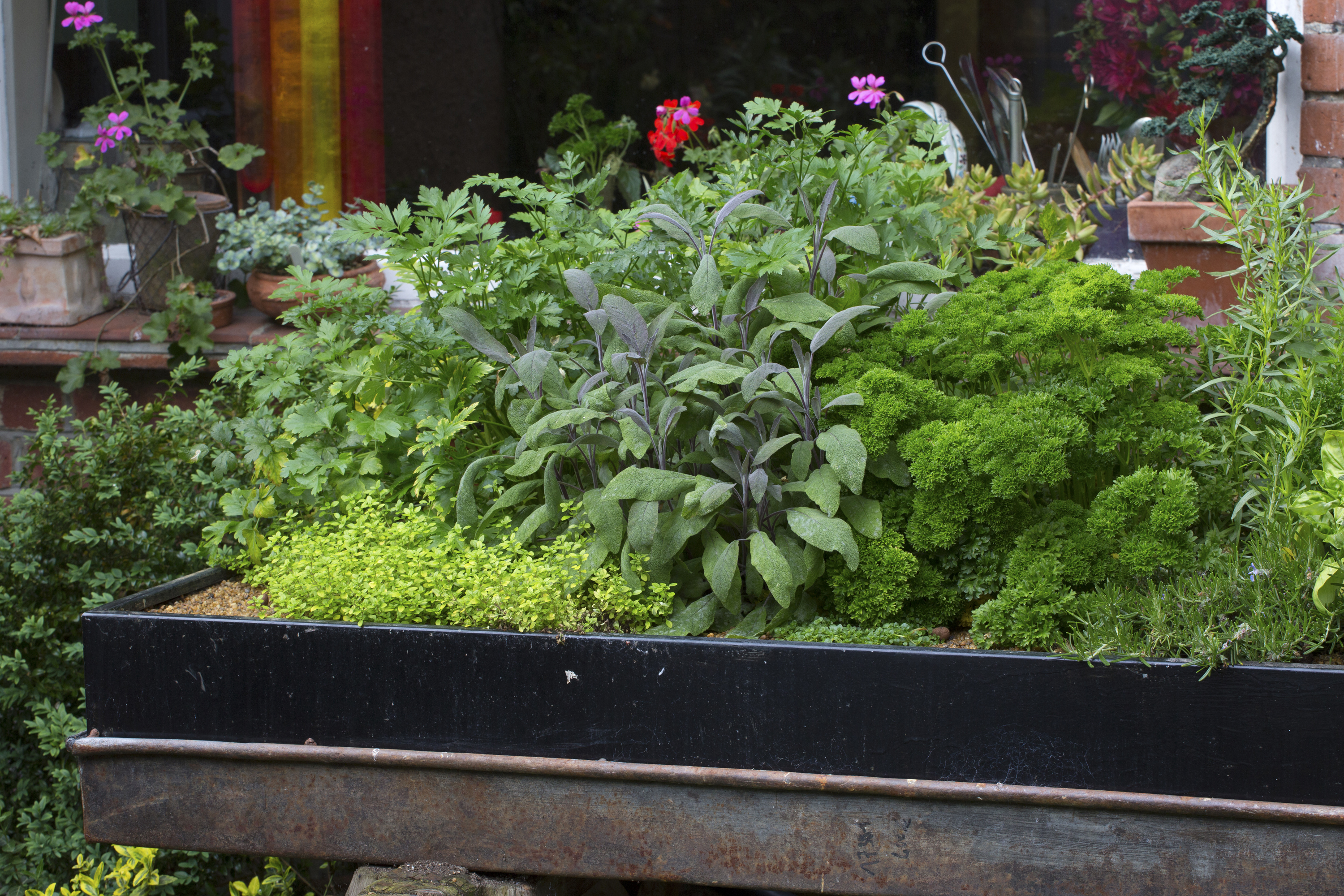
A herb planter is a useful way to grow a variety of herbs in one place on a patio
Herb planters are also a good way to grow a variety of herbs in one place on a patio or courtyard. There are a variety of different sizes and styles available, and stepped herb planters are ideal for tucking into a smaller space.
4. Plant yours vertically
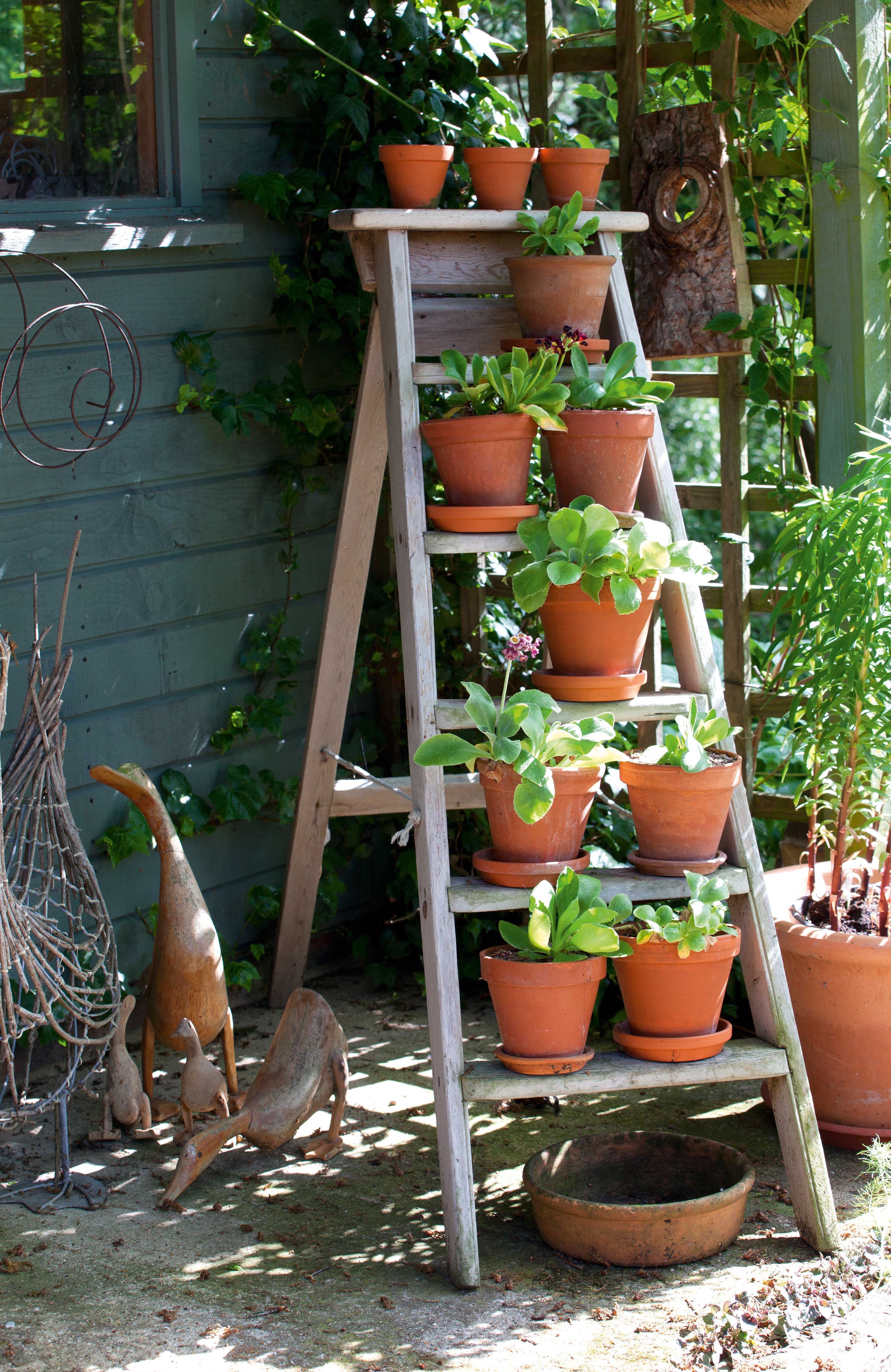
Vertical wall containers and planters are an option for growing herbs where space is limited. Find ideas and advice for making a vertical planter, which you can fill with herbs, or how to make hanging planters.
Herb garden care
To care for your potted herb garden, remember:
- Herb in pots will need to be watered regularly so just test the soil each day - if it feels crumbly or dry give them a water.
- Herbs require full sun for most of the day so make sure you position the pots or herb planter somewhere bright and warm.
- Pick your herbs regularly. The more you pick the herbs, the bushier and healthier they will grow
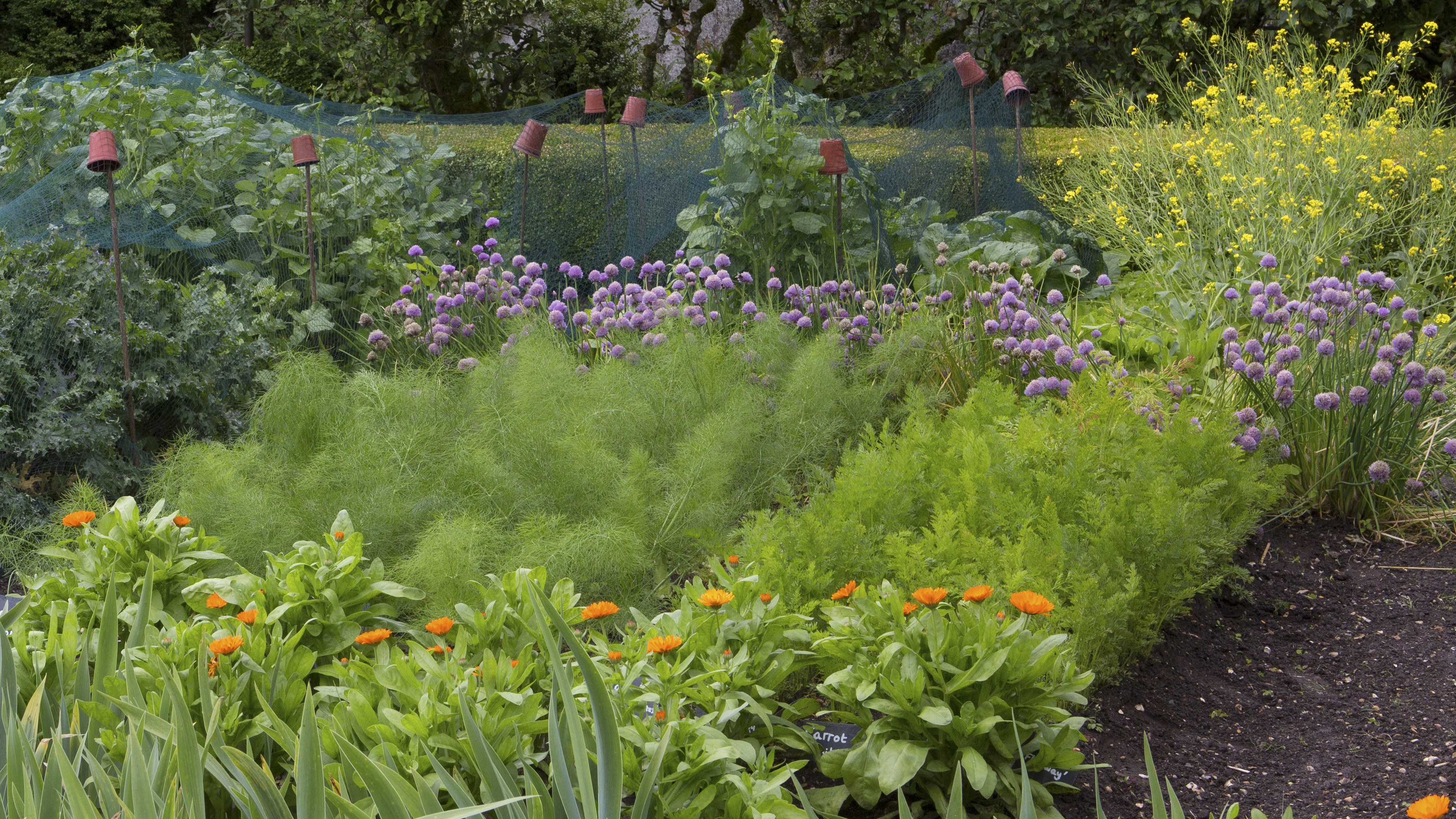
A herb garden can be appreciated for its scent, flowers and uses
Growing conditions for a herb garden
Herbs flourish in most soils. They require full sun – although some, such as parsley, mint and chervil, will tolerate light shade in summer – and good drainage, with the exception of mint, which will survive in damp soil.
Most annual herbs prefer enriched soil and feeding with additional nitrogen fertiliser for good foliage production. Shrubby herbs, such as rosemary and sage, prefer soil that isn’t too acidic; it is also advisable to mulch them to suppress weeds and retain some moisture in summer.
Herb gardens tend to be drought resistant but in hot, dry spells a deep watering will help to keep the plants healthy. See the rest of our drought tolerant plant favourites to help you create an easy to maintain garden.

Create a mini herb garden in a special terracotta herb pot
Herb planting and care tips
- Picking herbs: the more you pick the herbs, the bushier and healthier they will grow and stop bolting, but don’t remove more than half the plant at any one time.
- Prune hardy herbs that stay outside in spring – rosemary, lavender, thyme, mint, chives, sage, bay.
- Potted herbs can be grown as part of an indoor herb garden in winter on south-facing windowsills; think: chives, parsley, oregano and mint.
- Some herbs do best grown from seeds, including basil, chives, parsley and thyme.
- Annuals can be grown from seed or seedlings, and successional planting will give a longer supply.
- Start sowing herbs in spring under cover, and then plant up when the soil warms up.
- One square metre is enough for 10 herb plants.
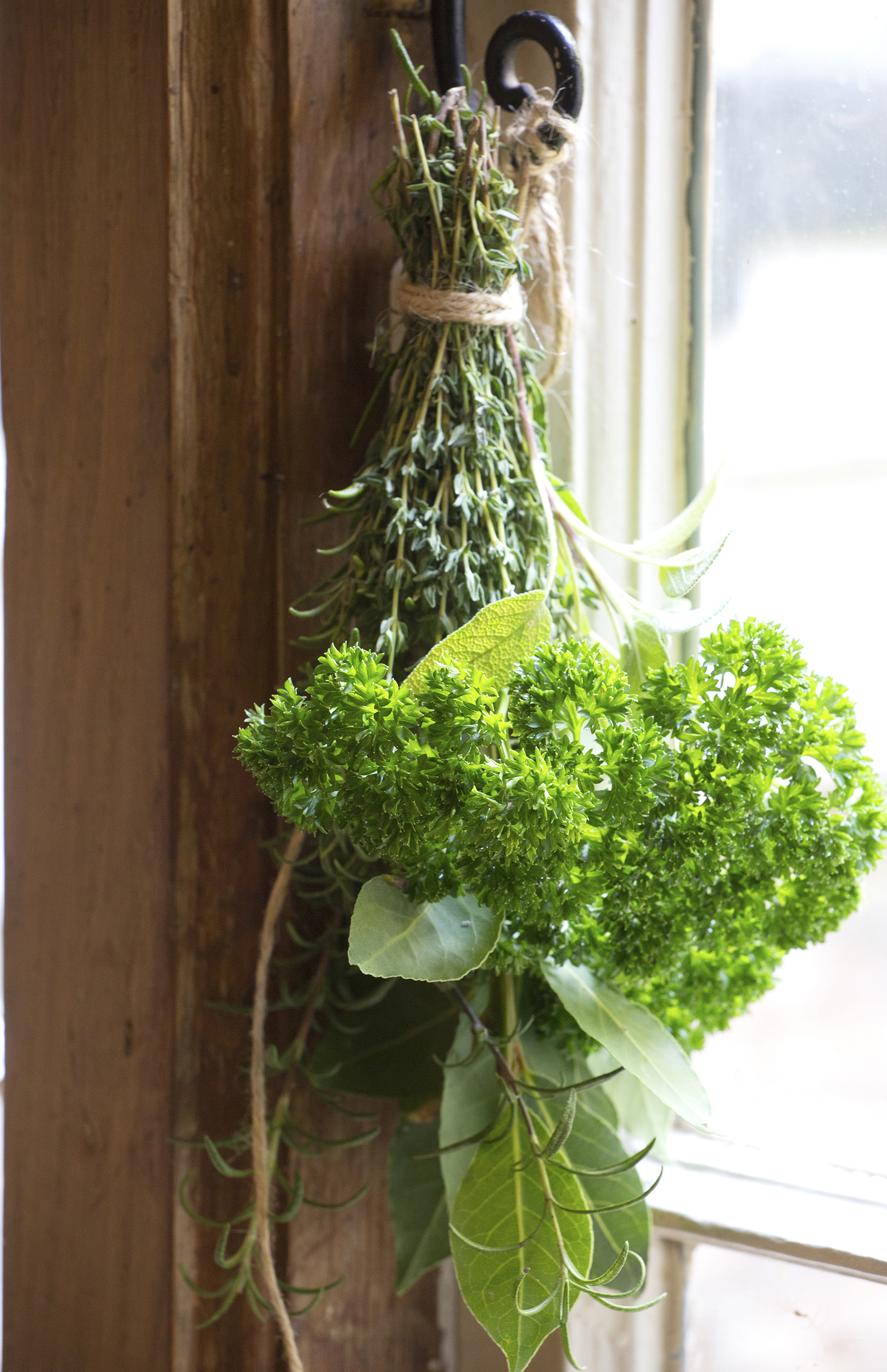
Perennial and shrubby cooking herbs that die back can be harvested in bunches and dried for use through winter
Harvesting your herb garden
Harvest the foliage of annual herbs as required, and pinch back the flower heads to encourage more foliage growth and prevent them from going spindly.
Perennial and shrubby cooking herbs that die back can be harvested in bunches and dried for use through winter. Pick in the morning, lie them out in a dry, well-ventilated place for a few days, then put into bunches and hang to completely dry out before storing in glass jars.
Because you harvest herbs sprig by sprig, a display can stay looking good through the seasons, and if plants die back they are easy and inexpensive to replace.
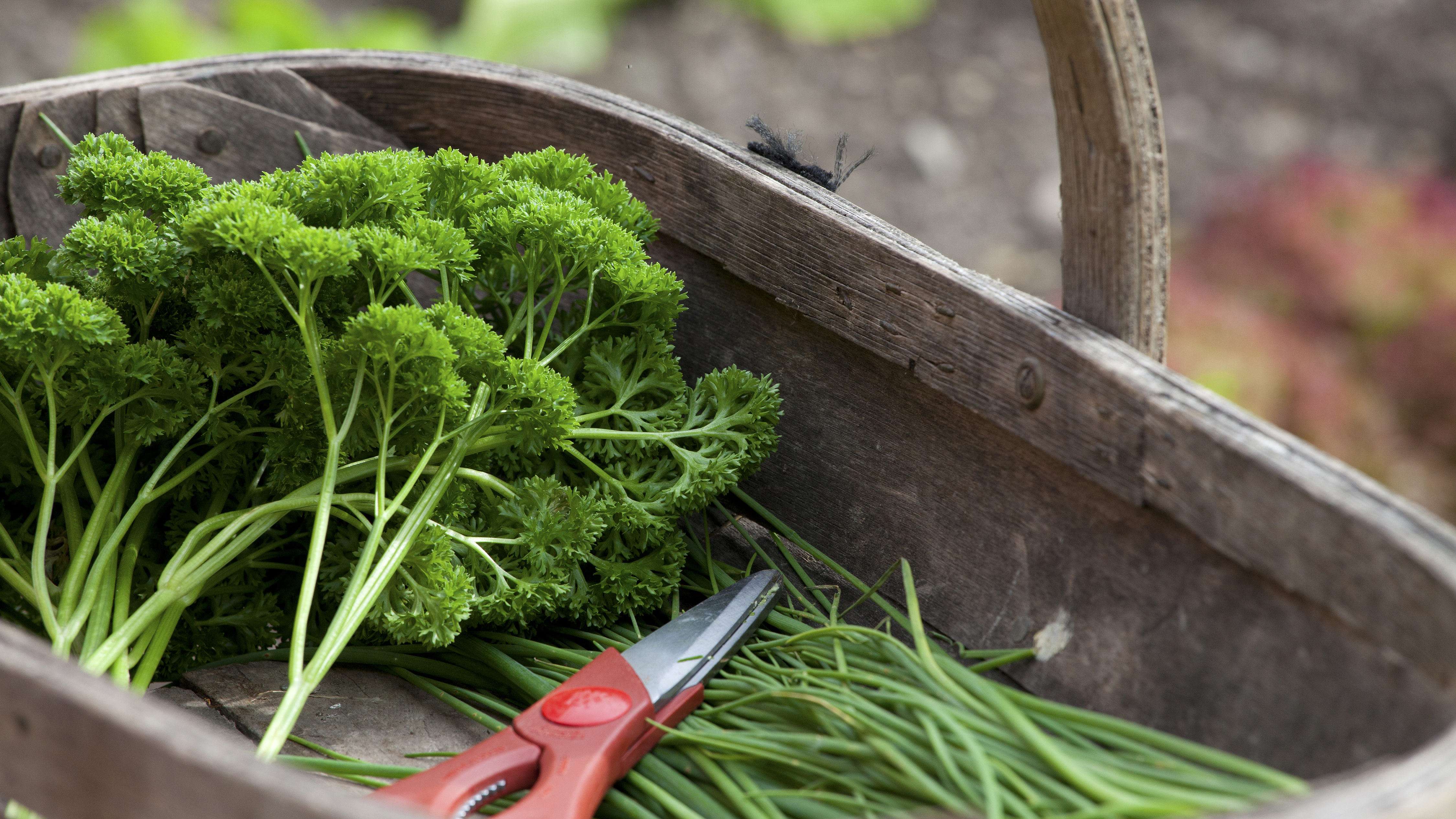
Harvest cooking herbs as required
Which herbs can be planted together?
Herb companion planting will ensure that your herb garden is even more of a success, this is our recommendation:
- Plant basil near tomatoes and asparagus;
- Chamomile with onions and cabbage;
- Chives with carrots and apple trees;
- Mint with cabbages and tomatoes;
- Parsley near roses, beans and carrots;
- Rosemary near beans, cabbages and carrots.

A herb garden can be designed to be formal or informal
- For more organic gardening tips check out our feature.
Best herbs list: 12 of our top herb garden plants
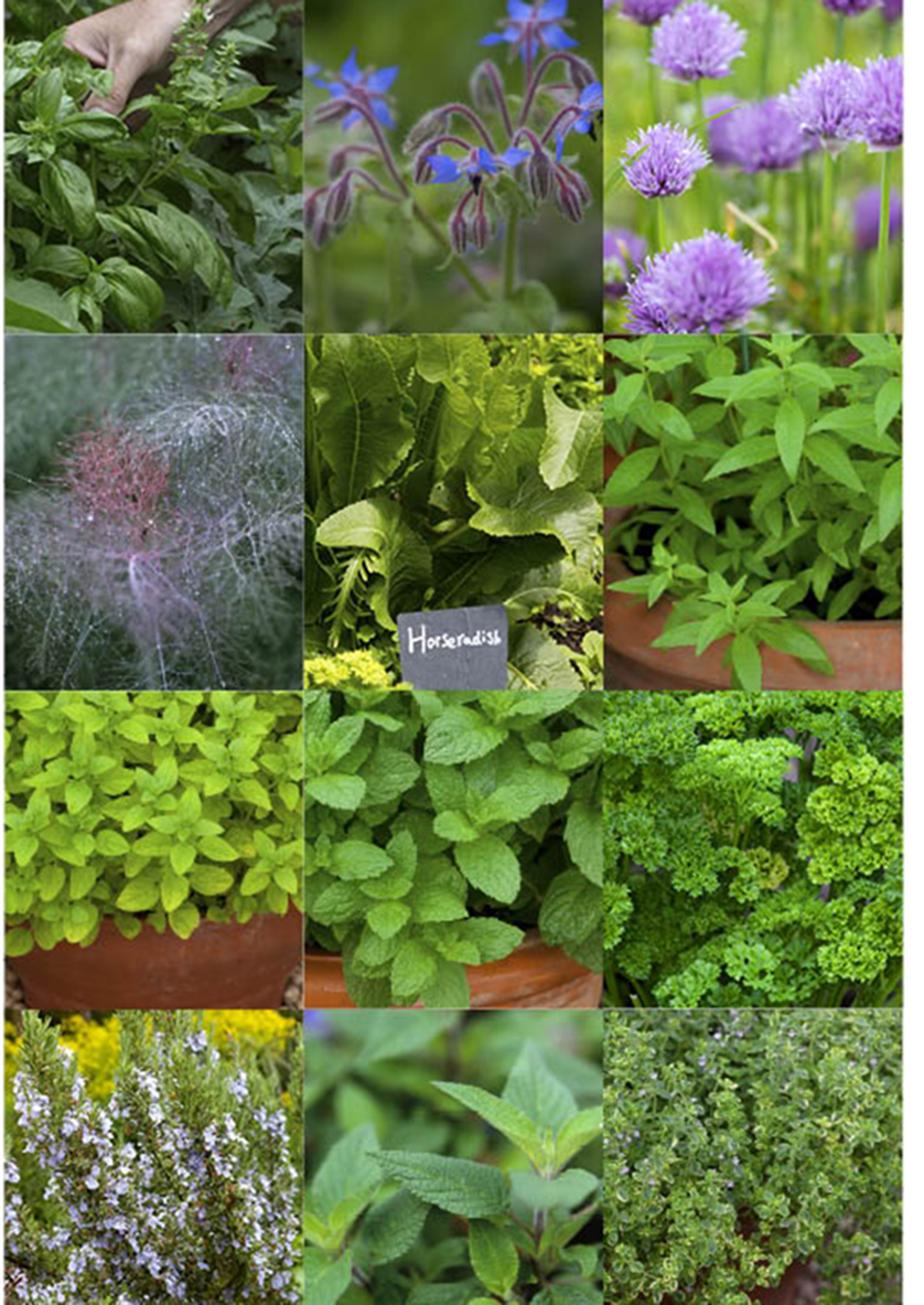
Add some of the suggestions from this herb list, below to your herb garden
Basil – fragrant annual with several unusual varieties. Pinch out growing tips to delay flowering and encourage bushiness.
Borage – self-seeding annual with edible leaves and flowers. Bees love the flowers.
Chives – clump-forming biennial with all parts edible. It can self-sow; cut down to the ground after flowering to produce fresh leaves.
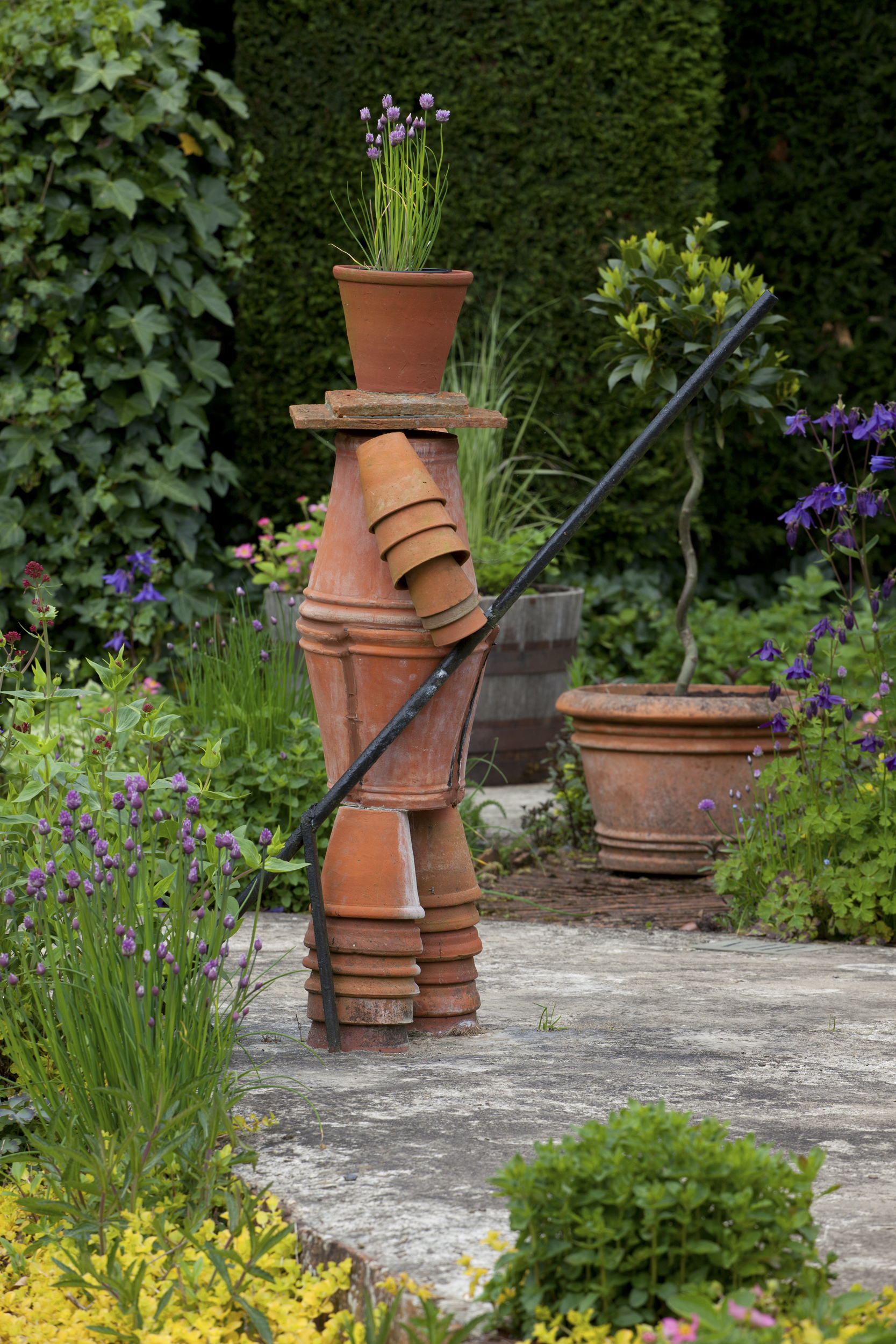
Chives are the crowning glory of this quirky terracotta pot man
Fennel – tall perennial with feathery foliage and large flower heads.
Horseradish – perennial with edible root.
Lemon verbena – shrub with slender and fragrant leaves, traditionally used to flavour herbal teas.
Marjoram – perennial, but often grown as an annual. Likes neutral to alkaline soil.
Mint – rambling perennial. It can be invasive so is best planted in a container.
Parsley – fast-growing biennial. Can be harvested year-round with successional planting.
Rosemary – hardy evergreen shrub. Routine picking encourages growth; remove dead stems in spring and prune after flowering.
Sage – evergreen perennial, for use fresh or dried. Hard prune in early spring for bushy growth.
Thyme – prostrate perennial with edible foliage and flowers. Useful as a ground cover; trim the plant lightly after flowering.
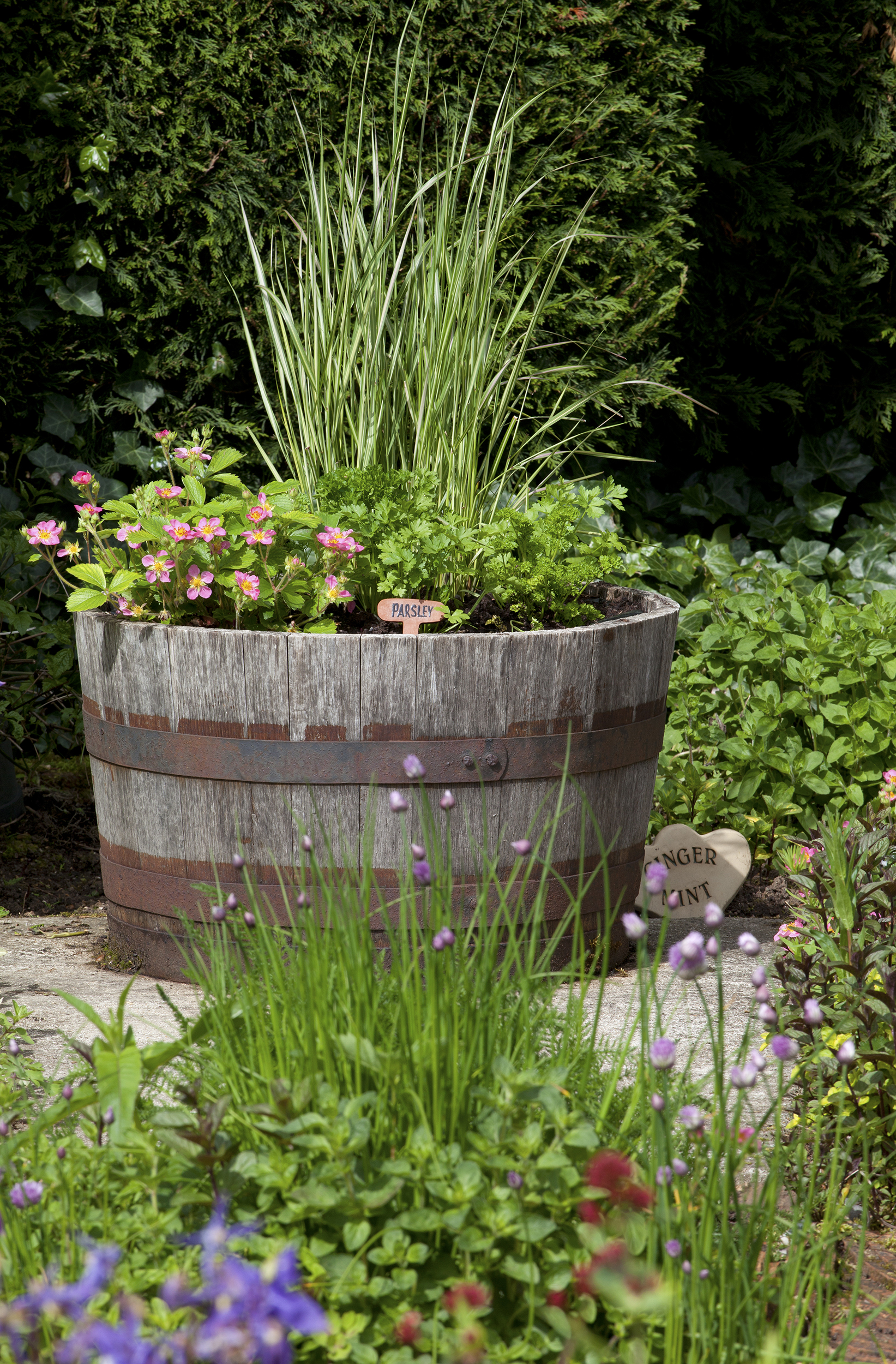
Herbs grown in pots can be positioned so they get the maximum amount of sunshine a day
Indoor herb garden
If you are growing an indoor herb garden you can use small ceramic or metal pots for each herb. Just make sure they have holes in the bottom and pop something underneath them to catch the water.
Growing indoors is a great option for cooking herbs as they will be readily to hand for the chef of the house, and they will also make the kitchen a pretty, fragrant environment.
You can buy indoor herb garden kits to help you grow healthy cooking herbs. Many come with self-regulating irrigation systems that filter the water through to the herbs over time and tell you when your plants need a refill.
A number of indoor herb garden kits will provide the planters, a choice of seeds, and instructions on where to place them and how to grow them effectively.
The best herbs to grow indoors, which are also excellent cooking herbs, include:
- Rosemary - south-facing window
- Parsley - east or west-facing window
- Oregano - south-facing window
- Basil - south-facing window
- Chives - east or west-facing window
- Thyme - south-facing window
- Bay laurel - east or west-facing window
- Chervil - east or west-facing window
- Mint - east or west-facing window
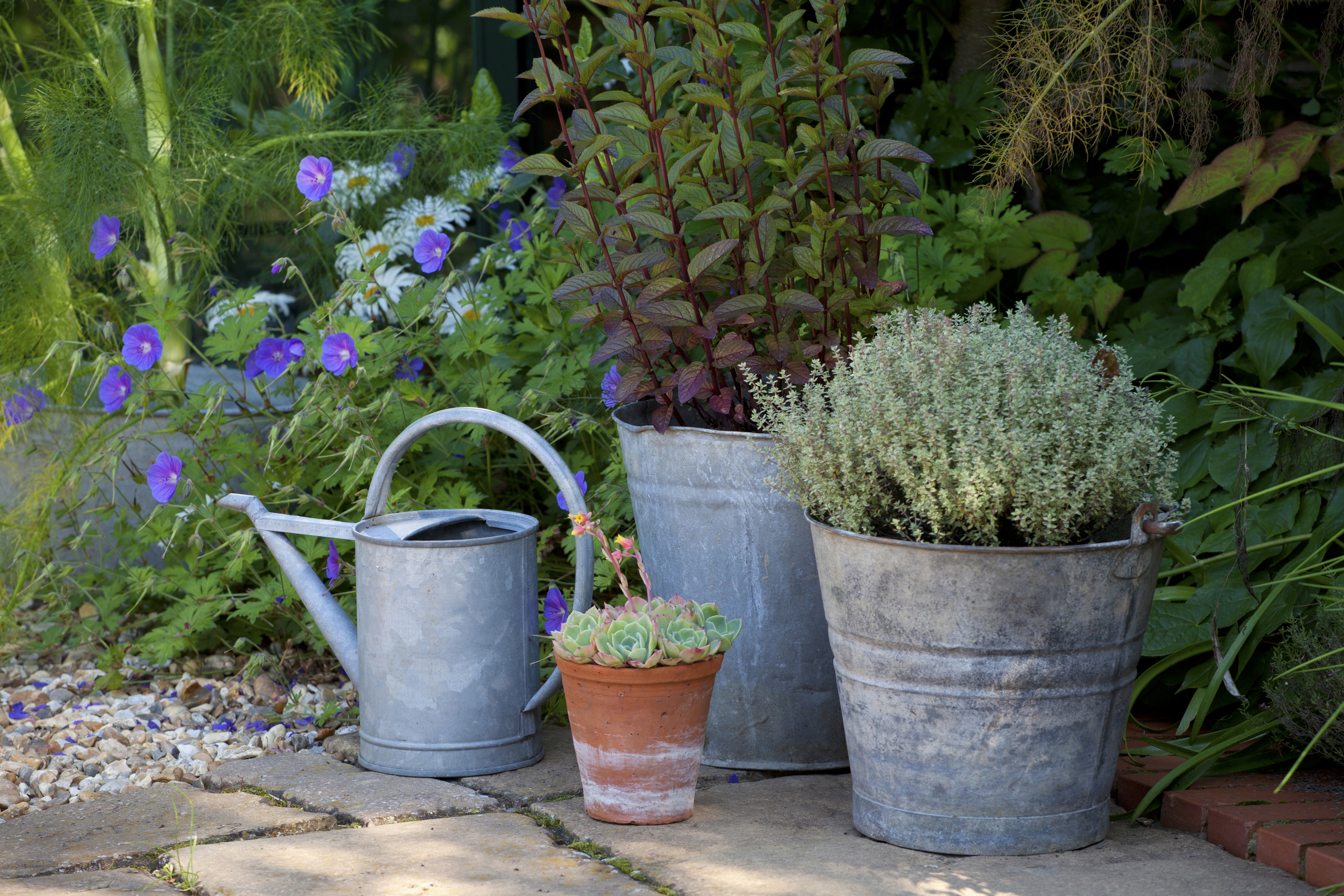
Consider including some medicinal herbs in your herb garden, such as holy basil
- Find more advice on how to grow your own in our feature
Medicinal herbs in a herb garden
Before the advent of modern medicines, herbs were used for medicinal purposes with different plants containing properties that could soothe and help various ailments. Consider incorporating some of these medicinal herbs into your garden and refer to traditional guides for how they can be used in herbal medicines.
Below is a list of some of the medicinal herbs that you could add to your herb garden:
- Bergamot - as an infusion provides relief for nausea, flatulence, menstrual pain and vomiting.
- Catnip - said to sooth the nervous system, aid sleep, calm upset stomachs
- Echinacea - stimulates the immune system, and effective in preventing or reducing colds and flu
- Lavender - soothes insect bites and headaches
- Chicory - helps the digestive system
- Feverfew - for easing migraines
- Chamomile - to ease anxiety and promote relaxation
- Flax, linseed - anti-oxidant and anti-inflammatory properties
- Valerian - used as a sedative and relaxant
- Holy basil - high in anti-oxidants and is believed to aid your body to detox as well as reduce stress and anxiety
Herb gardens to visit
- Jekka’s Herb Farm - the largest collection of culinary herbs in the UK.
- Chelsea Physic Garden - London’s oldest botanic garden, established by The Worshipful Society of Apothecaries of London in 1673, and home to thousands of medicinal, herbal, edible and useful plants.
- Herbs for healing - Grower and supplier of medicinal herbs, with a display garden that can be visited on group tours.
- The Herb Farm - Specialist herb propagation and growing, with a comprehensive range of herbs to buy, as well as a shop and café.
- Acorn Bank - Renowned for its vast herb collection, these are used daily in soups, salads and puddings in the tea rooms.
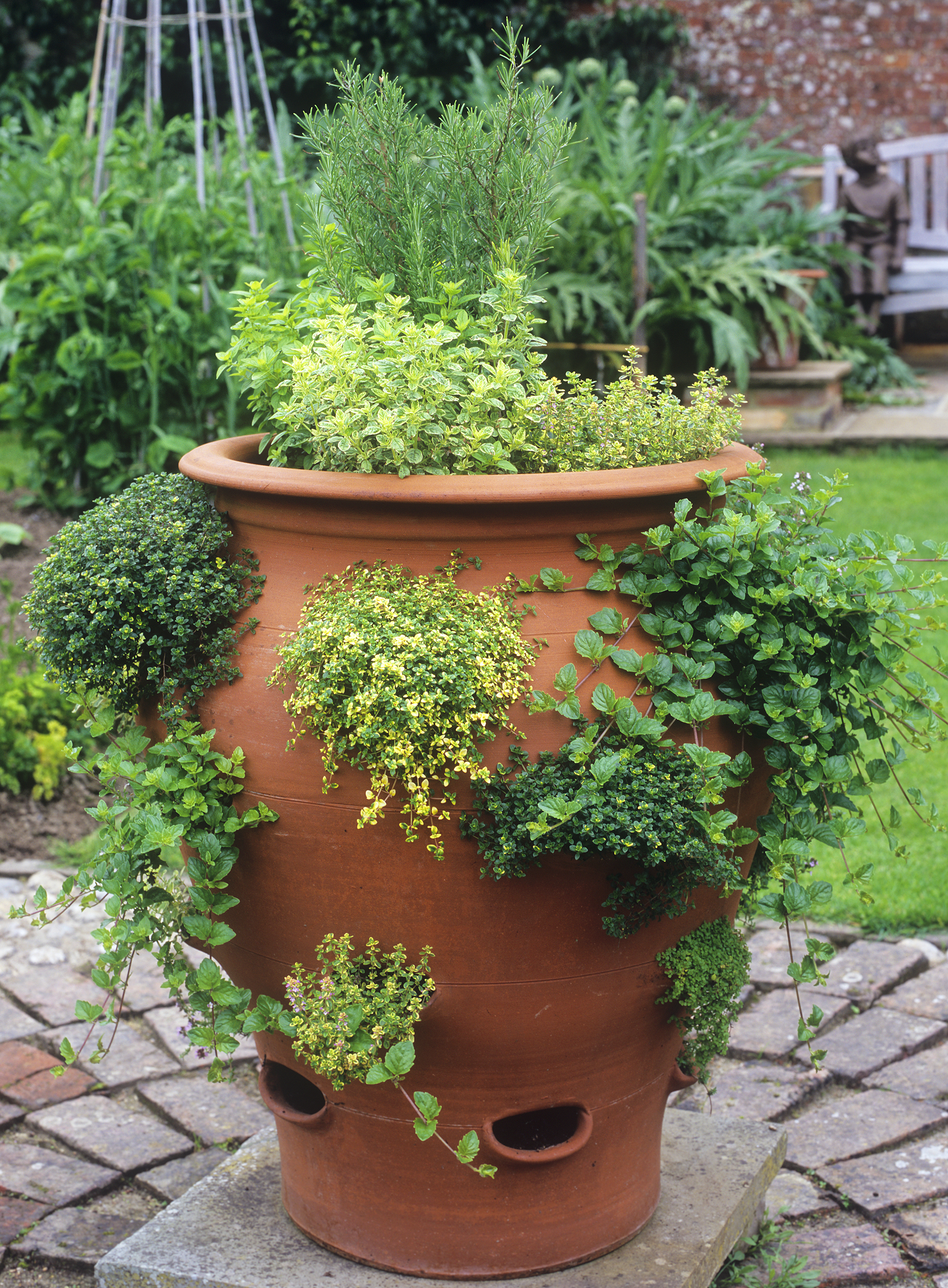
Multi-aperture herb or strawberry pots are ideal containers for low growers, such as thyme, oregano or mint
More gardening advice
- How to create a cottage garden
- Create an organic garden
- How to plan a kitchen garden
- Outdoor kitchen design ideas and advice